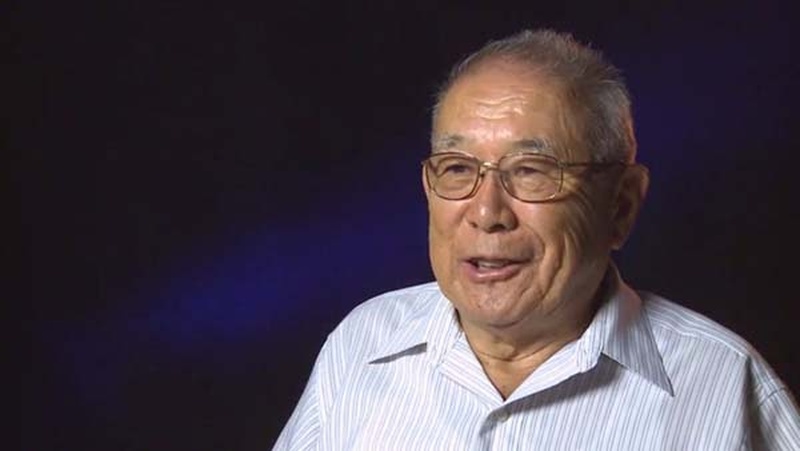I stopped writing the series “Quiet Warriors” unexpectedly.
“Mikiko, you have a bad reputation,” Tosh Okamoto said when I called him for his turn.
He had originally brought the list of surviving Nisei veterans to interview to the NAP office.
“I’m not ready…” he had replied.
“What do you have to be ready for? You can just tell me what you saw or how you feel about it now,” I assured him.
“No, no. You know, people die after you interview them. I’m not ready yet…”
It was true. Four of the vets I had interviewed had passed away by then. I wanted to believe that it was their age. Owing to the lateness of my interviews in 2003-2004, we had scheduled the interviews by age, eldest first. But somehow, I still needed to convince myself that I hadn’t done anything wrong.
Did the World War II veterans feel relieved after spilling unpleasant memories that they had held for so long?
Had I given them a chance to reflect and to realize that by serving as soldiers, they had done the greatest thing they could have at that time for all Japanese and Japanese Americans?
Did that help them to close their last chapters?
Did they die more peacefully?
On my end, I couldn’t continue the interviews anymore.
I had developed tremendous respect for the veterans. They trusted me, a stranger from Japan who had lived in a different era and was a child of their former enemy country. But they told me their beliefs and their experiences honestly with warmth and generosity.
Originally, my plan had been to write articles in Japanese for Japanese readers, which I did. The Japanese in Japan, and recent arrivals here, had just started hearing about the history of Japanese Americans and the relocation camps, but not about “Yes-Yes” boys, Japanese Americans who swore their allegiance to the U.S. and served in its military. While the veterans’ stories were nothing new to the Seattle Nikkei community, the vets had wanted to read what I had written. And so, I had translated the articles to English, enlisting help from John Litz, a longtime NAP proofreader.
I had known that opening up and telling how they feel would be a hard thing to do for men, especially ones raised by Japanese parents, who tend to be reserved. In 2020, I felt that having conducted the Nisei veteran interviews was a true honor. I wondered how I could spread their stories and not waste them.
I am so glad that NAP reprinted them this year so the veterans’ children, grandchildren, and the younger generation could share what their ancestors went through. Thanks to them, we can have a “normal life” in the US.
The experiences I learned from Nisei soldiers completely flipped my concept of the US National Anthem. I used to think it was a song of a victory in war but it is really a song of victory of soldiers who died and lived through a war.
Ever since, every time I hear and sing “The Star-Spangled Banner” (which the gospel choir that I was in sang to open sports games), the faces of my dear Nisei friends, the brave men with their motto “Go for Broke,” come up in my imaginary battlefield.
By the dawn’s early light, they are looking up at the flag that they had put up in the Vosges Mountains, France. And I’m there, quietly humming along with them.
*This was origtnally published in the North American Post on November 17, 2021
© 2021 Mikiko Amagai / The North American Post







